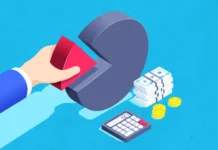The Reserve Bank of India (RBI) announced last week that the card-less cash withdrawal system has been proposed to be made available in all ATMs across the country.

This, the RBI said, will be done with the help of Unified Payments Interface (UPI).
“At present the facility of cardless cash withdrawal through ATMs is limited only to a few banks. It is now proposed to make cardless cash withdrawal facility available across all banks and ATM networks using the UPI,” RBI Governor Shaktikanta Das said while making the announcement.
How will this work? Will there be additional charges? Here’s all you need to know.
How does card-less withdrawal system work?
The RBI explained that this system will work via UPI.
All ATMs are expected to show an option of withdrawing cash via UPI.
Once the amount is entered, a UPI code will be generated and displayed on ATM.
On scanning this via your mobile, and entering the password, you will be able to withdraw money.
But don’t card-less withdrawals already exist?
Yes, but not via UPI. For example, if you want to withdraw money, without a card from your SBI account, you would need to:
- Download the SBI YONO app
- Select YONO cash
- Enter withdrawal amount
- Enter OTP on the ATM screen
However, the proposed UPI method is different from this.
Which banks have this method of withdrawal?
- SBI
- HDFC
- ICICI
- Kotak Mahindra Bank
- Punjab National Bank
Does this mean the issuance of debit cards will stop?
No, that is not the case.
Das, in a statement, said that debit cards have multiple purposes and can be used at restaurant, shop, or for payments in a foreign country, and the issuance of the same will not be stopped.
When will this come into effect?

There is no clarity on that. Watch out this space for more information. RBI Deputy Governor T Rabi Shankar said that the date could be announced in the next 2-3 months.
Scalability of this feature might be a challenge as it has to be seen how many banks quickly roll it out to their customers, Kumar Shekhar, VP, Member Operations, Tide (India) said.
In cardless withdrawal, the security vulnerability of a card is minimised, but the risk will soon transfer to a mobile-enabled feature. The mobile can now become epicentre of transactions, making it the next target for the fraudsters, Bhaskar said .
What is the future of debit cards?
Issuing cards will not be stopped, as they have several other utilities beyond cash withdrawals. They can be used at a restaurant, shop, or for payments in a foreign country, Das said in a statement.
Debit card is a very evolved financial product and has already gone through a lot of iterations to its perfection. In its further evolution, we are seeing new use cases for debit cards like having standing instructions or EMI payments, Bhaskar said .
“There is still a lot of time for UPI to come to the level of sophistication of a debit card. Moreover, the debit card will continue to serve some segments of the economy which are not comfortable with pure digital payment solutions like UPI or who want to have higher transaction limits,” Bhaskar added.
Will there be additional charges on card-less withdrawals?
It is not clear at the moment whether UPI withdrawals will have additional fee. Each bank has a different upper-limit on the withdrawals.
For example, HDFC Bank users have a withdrawal limit of Rs 10,000 each day, and Rs 25,000 per month. It also comes with Rs 25 transaction fee per withdrawal.
What is card skimming?

Criminals steal data from credit or debit cards by tracking a card swiped at ATMs. They pick this information from using a skimming device that reads the card’s magnetic strip. These devices are surreptitiously installed on ATMs. And once the device picks up the data, it can be used to gain unauthorised access to the user’s banking records.
The stolen information can be coded onto a new card, a process called cloning, and be used to make payments and transact with other bank accounts. Problematic ATMs that function intermittently, and the ones located in isolated areas are often used to install such skimming devices.
Fraudsters also install scanning devices on point of sale machines. These devices can stealthily scan a card before it is swiped at the payment counter at a departmental store. This is especially tough to spot if the billing counter is not in the line of sight of the card owner.
These devices are difficult to identify as they appear to be a legitimate part of an existing ATM, or like a regular in-store card reader. It is skilfully fitted to the payment machines.
What issues does this tech solve?
According to the RBI Governor Shaktikanta Das, cardless cash withdrawals will enhance security of cash withdrawal transactions. Besides, it would help prevent frauds like card skimming and card cloning.
Currently, only existing customers of a few banks are allowed to withdraw cash without cards, and from specific bank’s ATM networks. However, RBI’s move to allow interoperability in cardless withdrawals will enable users to take cash from any all bank’s ATM.
RBI’s move will invite more players into the payment ecosystem in India to innovate and solve further problems of customers, Swapnil Bhaskar, Head of Strategy, Niyo, a millennial- focused neo-banking platform, said. #KhabarLive #hydnews







